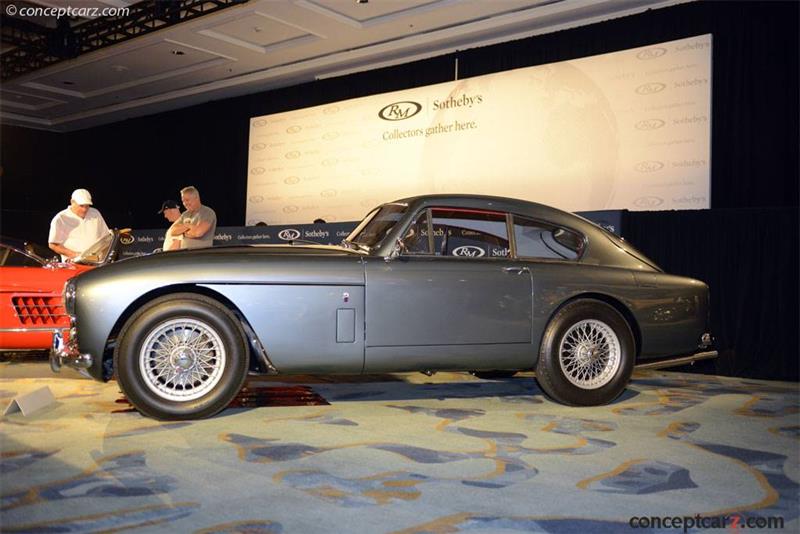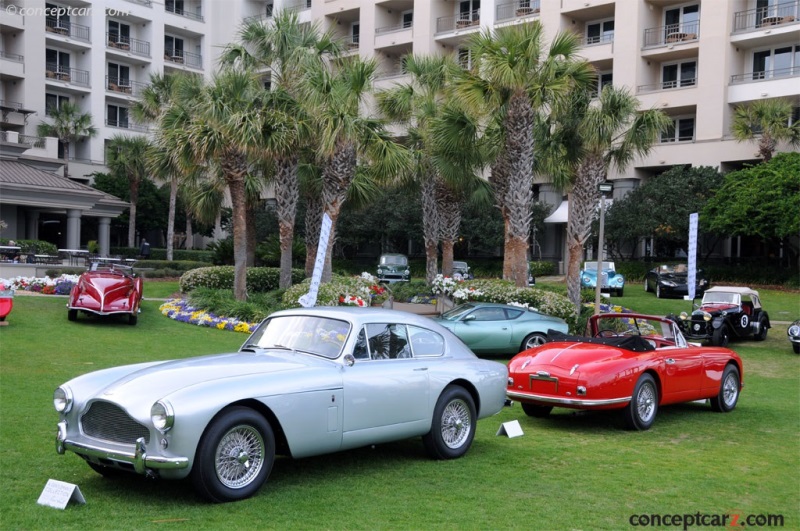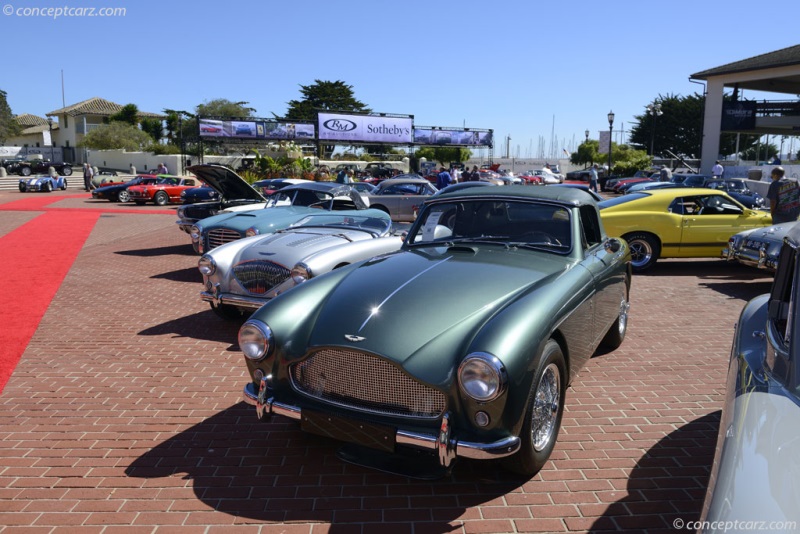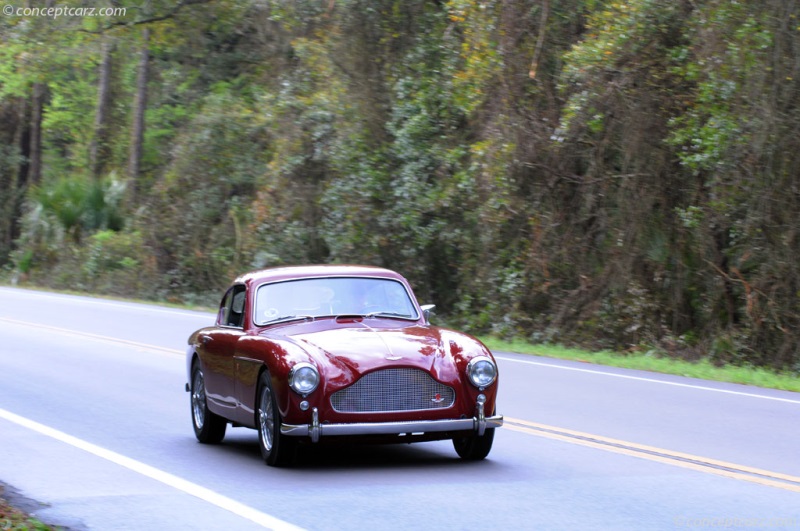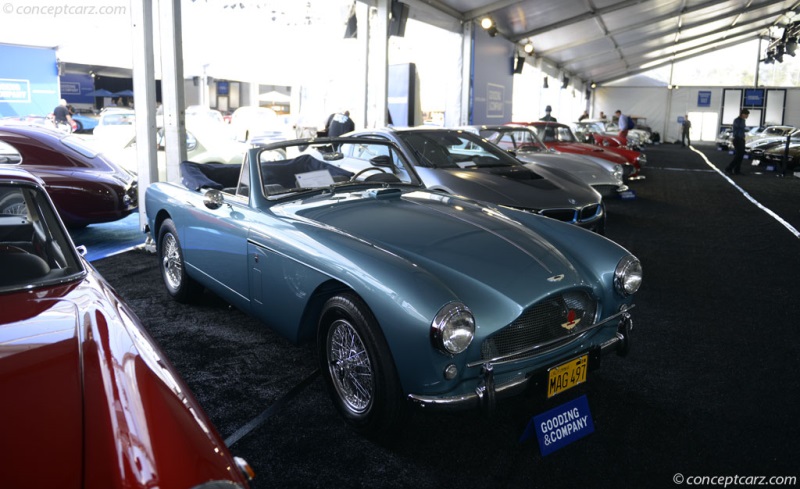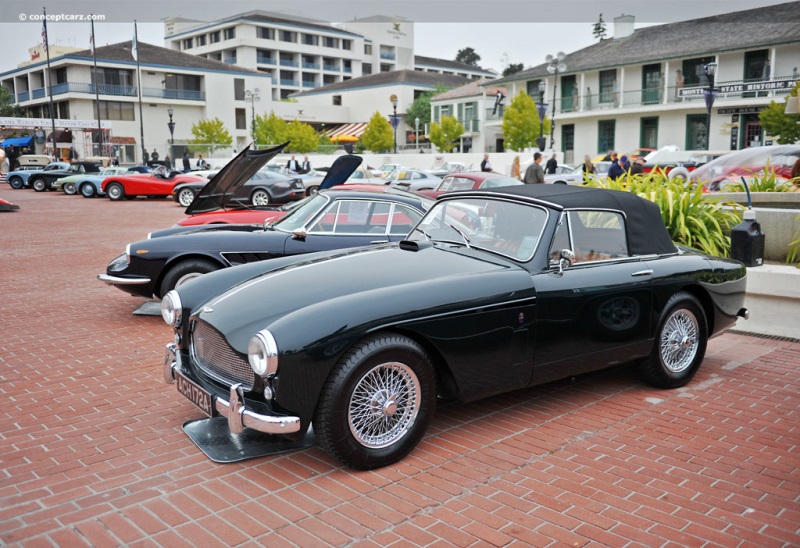Aston Martin launched the DB2 in 1950 and was the first in a long line of DB grand tourers and high-performance sports cars. David Brown had acquired Aston Martin and Lagonda in 1948, the latter for its straight-six engine which would power the new model to third in 1949's Spa-Francorchamps 24 Hours. Wearing Frank Freeley-designed sports saloon coachwork, the two-seater body was a drastic departure from any previous Aston and featured curvaceous lines that were modern and elegant, the whole front of which hinged forward. A young racing designer named Ted Cutting later reworked the design which was installed on Claude Hill's revolutionary Atom chassis and powered by the LB6-designated 2,580cc twin-cam engine.
Fastback Coupe
Chassis #: AM300/3/1624
Engine #: DBA 1242
View info and historyHill's cross-members were substituted with a cruciform structure that reduced ground clearance and weight as well as increased torsional rigidity. The front independent suspension was comprised of coil springs and transverse torsion bars, while the rear used a live rear axle with coil springs, parallel arms, and Panhard rod. Stopping power was by hydraulically powered drums. The 105 horsepower produced by the engine was transmitted through a four-speed David Brown gearbox, with zero-to-sixty mph taking 12.4 seconds and having a top speed of 110 mph. The Vantage engine boosted power even further to 125 bhp. Sales of the DB2 were hindered by the limitations of minimal luggage space and only two seats. Freeley reworked the design, adding an occasional double beach in the rear which folded down to increase carrying capacity. The roofline was slightly raised to increase headroom and larger rear windows were added in an opening lid. The other pieces of glass were also redesigned with the windscreen being a single rather than two-piece moulding, and the quarterlight windows were reshaped. The car's overall length increased by six inches, bumpers became more substantial and incorporated over-riders, and the headlights repositioned higher in the bonnet. These modifications resulted in a new name, the 1953 DB2/4, and was the world's first genuine GT hatchback. Production of the DB2/4 continued from 1953 until 1957 and was available as a drophead coupe, a 2-seat Fixed Head Coupe, and a 2+2 hatchback Saloon. A few examples wore Bertone bodied spider coachwork. The DB2/4 MK II model was introduced in 1955 and came with optional high compression, large-valve 165 horsepower engine. Exterior modifications included additional chrome, bubble-type tail lights, and small tailfins. A 2-seat Fixed head Coupe body style was added, in addition to the Drophead. 199 examples of the Mark II were built with 34 fitted with the new coupe body. Three Mark II chassis wore spider coachwork by Carrozzeria Touring.
Fastback Coupe
Chassis #: AM 300 3 1622
Engine #: DBA 1234
View info and history
Auction entries : 1In early October of 1956, chassis number M300/3A/1300, codenamed Design Project 193, was completed. It would form the basis of the DB2/4 Mark III, commonly referred to as the DB Mark III. Significant changes included a more modern-looking radiator grille similar to the one used on the production DB3S sports-racing model, and a sculpted bonnet. The Mark II's chrome stripe above the windscreen was removed, and the rear quarter-light windows could now be opened. The instrumentation was now positioned within a hooded binnacle behind the steering wheel, its shape resembling that of the radiator grille.The 2,922cc VB6 twin-cam engine was completely redesigned by Aston's chief designer, Tadek Marek, with a new crankshaft, cylinder head modifications, and a new and strengthened cylinder block. Many of these changes were inspired by the DB3S, resulting in 162 horsepower at 5,500 RPM and 180 lb/ft at 4,000 RPM. Zero-to-sixty mph was accomplished in 9.3 seconds and the top speed was 120 mph. The optional 178 bhp version with twin exhaust pipes was also offered. Front disc brakes were standard rather than optional after the first 100 cars had been built, commencing at chassis '1401'. There were modifications to the clutch and gearbox, a Laycock overdrive became available.Aston Martin offered a more powerful DBB and (later) DBD 'Special Series' engine. Aston Martin used the 1958 London Motor Show to introduce this option which came with triple (although sometimes with twin) SU carburetors, bringing horsepower to 180 bhp or 195 hp with the twin exhaust. 47 cars received this engine.
Fastback Coupe
Chassis #: AM300/3/1386
Engine #: 1029
View info and history
Auction entries : 1The total hand-built DB Mark III built at the company's Feltham works reached 551 examples during their relatively brief production run, including one purpose-built competition model. Built between March of 1957 and July of 1959, most were saloons with 55-percent exported. 85 DB MkIII drophead coupes were built, the most expensive of the three body styles offered by Tickford, with 14 receiving the DBD 'Special Series' engine. The Aston Martin DB MkIII drophead coupe played a starring role alongside James Bond, appearing in Ian Fleming's novel 'Goldfinger', though by the time the book made it to the screen the DB5 was the current model, so that was used instead.
by Daniel Vaughan | Jun 2020
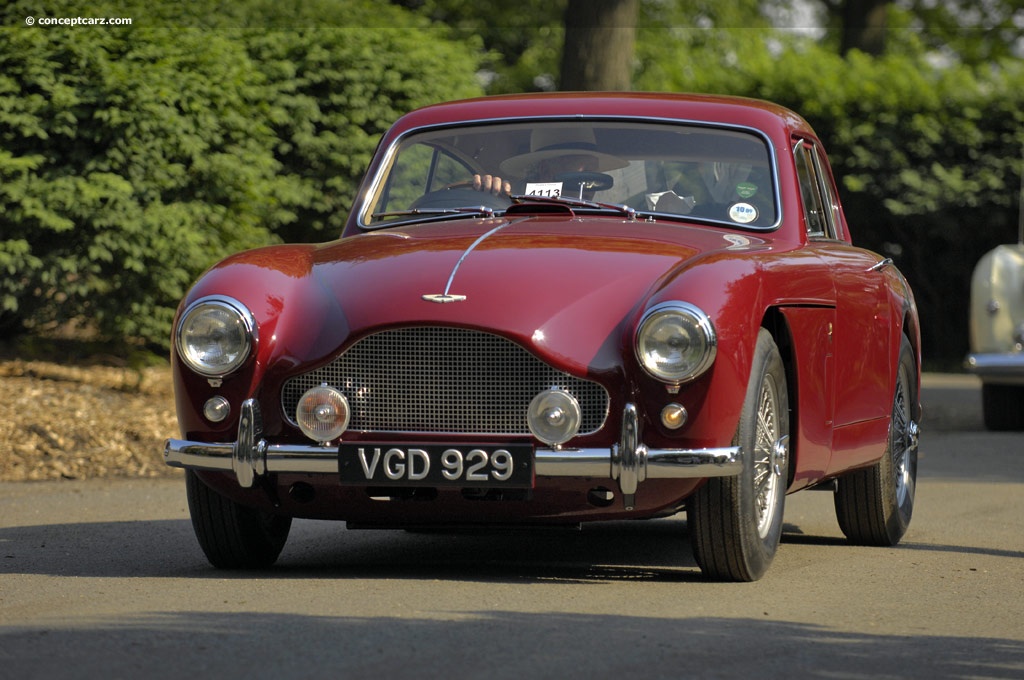
Fastback Coupe
Chassis #: AM300/3/1624
Engine #: DBA 1242
View info and history
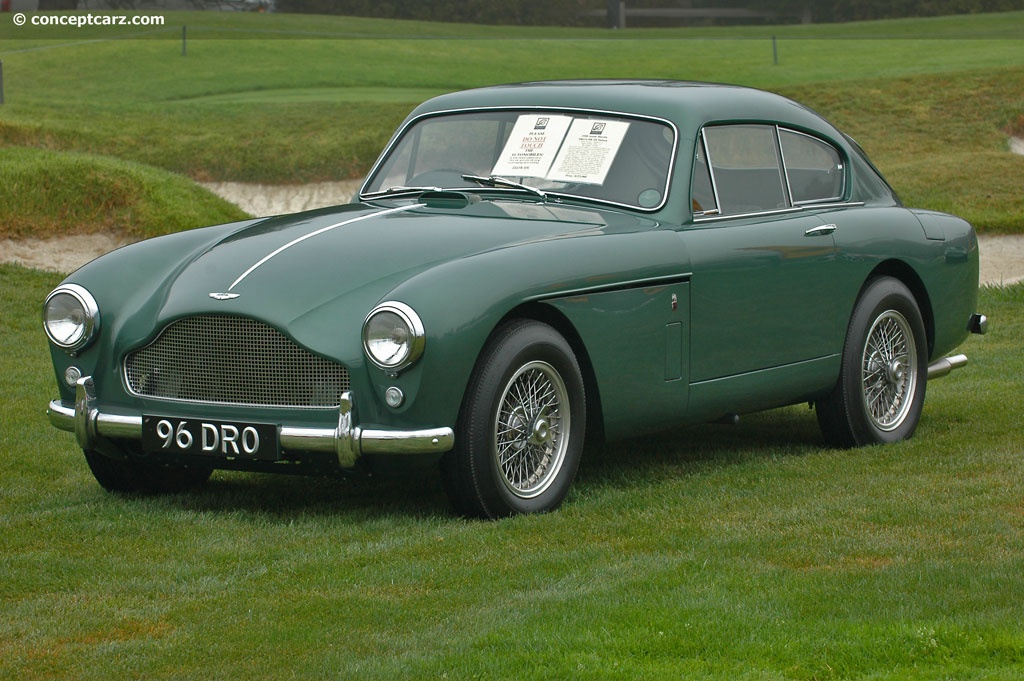
Fastback Coupe
Chassis #: AM 300 3 1622
Engine #: DBA 1234
View info and history
Auction entries : 1
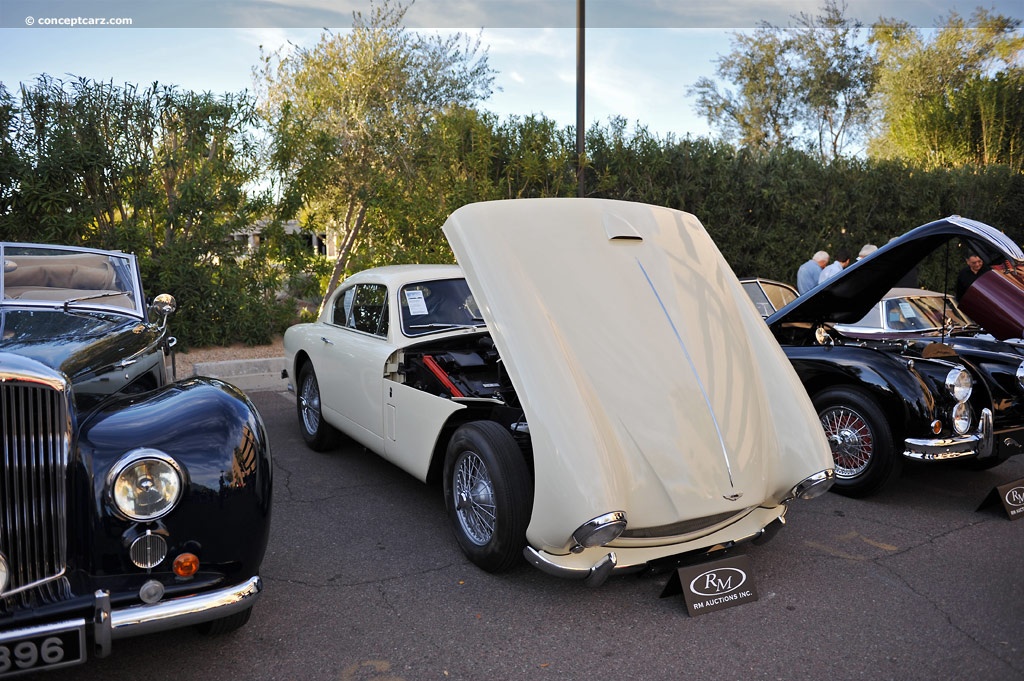
Fastback Coupe
Chassis #: AM300/3/1386
Engine #: 1029
View info and history
Auction entries : 1
by Daniel Vaughan | Jun 2020
Related Reading : Aston Martin DB2 Mark III History
The DB name came from the name David Brown (later Sir David Brown), an individual who had purchased the Aston Martin Company. The DB series was built from 1950 through 1953 with only 411 examples being produced. Power was supplied by a W.O. Bentely-designed Lagonda six-cylinder engine that was capable of producing 116 bhp and could propel the car to a top speed of 117 mph. The zero-to-sixty time....
Continue Reading >>
Continue Reading >>
Related Reading : Aston Martin DB2 History
The Aston Martin DB2 was introduced to the public at the New York Motor Show. This was not the vehicles first appearance as it had been raced at the grueling 24 Hours of LeMans where one of the drivers, Pierre Marechal, had been involved in a fatal accident. The DB2 was designed by Frank Freeley and configured as a two-seater touring vehicle. It was Aston Martins first real production vehicle. The....
Continue Reading >>
Continue Reading >>
Related Reading : Aston Martin DB2 History
The first Aston Martin was built in 1913 by London Singer dealers Robert Bamford and Lionel Martin. It was comprised of a Coventry Simplex engine and an Isotta Fraschini chassis. They were later joined by Count Louis Zborowski, who provided finical backing and was an avid racer. Under the patronage of Augustus Bertelli, the legacy of Aston Martin continued to grow in motorsports throughout the years.....
Continue Reading >>
Continue Reading >>
Aston Martin
Similar Automakers
Similarly Sized Vehicles
from 1958
Similarly Priced Vehicles
1958 Aston Martin DB2/4 MK III Vehicle Profiles
Recent Vehicle Additions
Performance and Specification Comparison
Price Comparison
$7,475
DB2 Mark III Specification Comparison by Year
Year
Production
Wheelbase
Engine
Prices
Related Automotive News

ASTON MARTIN OWNED BY THE SAME FAMILY FOR 56 YEARS GOES UNDER THE HAMMER
A very special 1958 Aston Martin DB 24 Mk III, owned by the same family for nearly six decades, is set to go under the hammer in Silverstone Auctions classic car sale at Race Retro on the 27th-28th February.
Offered for sale for the first time since...

RM Sotheby's To Offer The Petitjean Collection 'Part Ii' – A Ferrari Only Collection From 1959 To 1989 To Be Offered Without Reserve
AN EXCEPTIONAL COLLECTION OF 28 FERRARI ROAD CARS CELEBRATING THREE DECADES OF THE MARANELLO MARQUE HEADS TO PARIS SALE
RM Sothebys announces The Petitjean Collection Part II
Incredible collection of 28 Ferrari road cars to be offer...

Gooding & Company Unveils Online Catalogue for Pebble Beach Auctions, Announces Additional Star Consignments
The catalogue features major new additions from the auction house, including a 1959 Ferrari 250 GT LWB California Spider Competizione, a 1998 Mercedes-Benz AMG CLK GTR Strassenversion, a 1957 Maserati 200 SI, and a 1961 Aston Martin DB4 GT.
The...

Donald Campbell's DB4 GT Speeds into Bonhams Goodwood Revival Sale
A rare 1961 Aston Martin DB4 GT, one of only 45 right-hand drive examples produced and first privately owned by Donald Campbell CBE, the world land and water speed record breaker, is to be offered at the Bonhams Goodwood Revival Sale on Saturday 14 September,...

RM Sotheby's Presents Highly Original Aston Martin DB3S Works at Monterey Auction
SECOND WORKS CAR, CAMPAIGNED BY MOTORSPORT HERO PETER COLLINS
DB3S WORKS JOINS LIST OF STUNNING MODELS THROUGH THE DECADES SET FOR AN EVENING WITH ASTON MARTIN ON 15 AUGUST
RM Sothebys offers highly original and matching numbers 1953...

A New Automotive Icon To Debut At Le Mans – First DB4 GT Zagato Continuation Set For Unveil At Circuit De La Sarthe
DB4 GT Zagato Continuation to make public debut at 24 Hours of Le Mans 2019
Race-goers will be first to see Aston Martins most expensive new car
DB4 GT Zagato Continuation extends Zagato bloodline in centenary year
11 June 2019, GaydonLe Man...
























